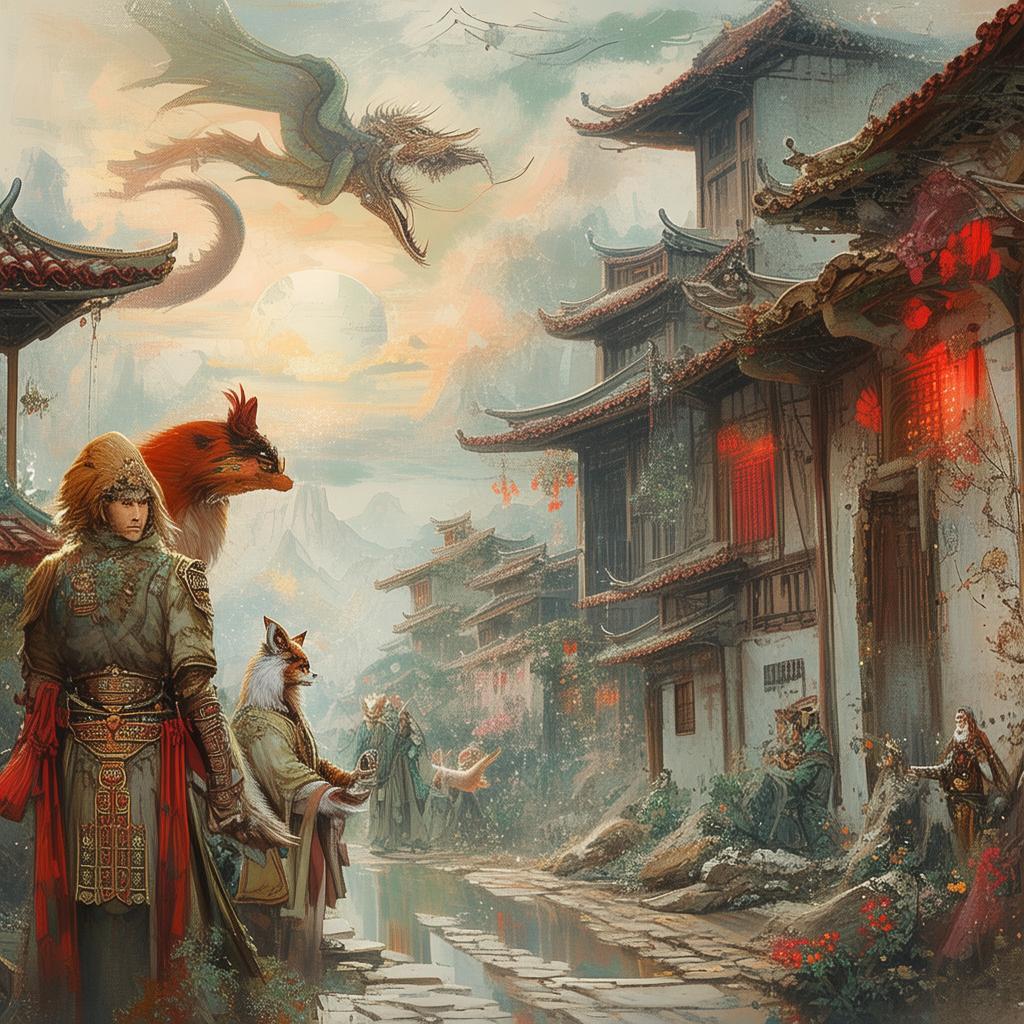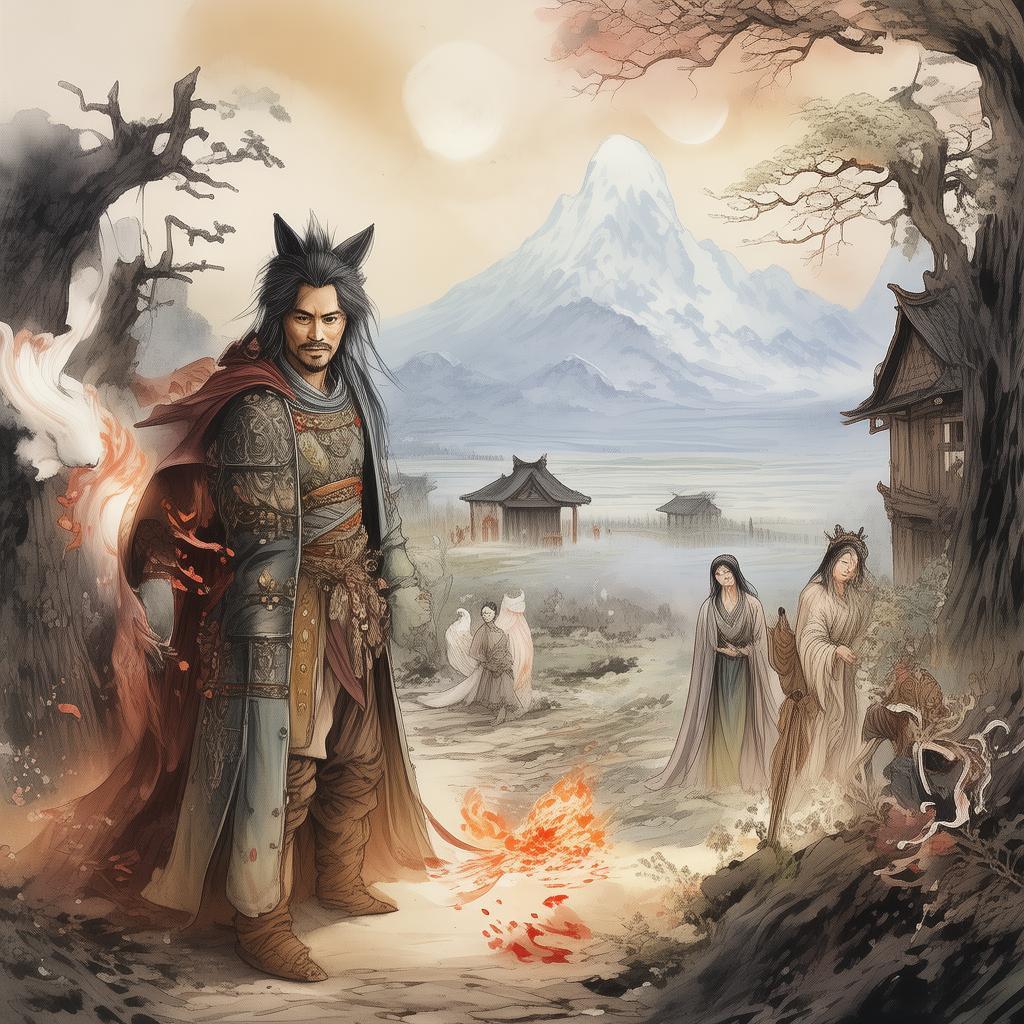Whispers of the Reality-Bending Paradox
In the ancient village of Lingxing, nestled between towering mountains and a whispering river, there was a legend that had been passed down through generations. It spoke of a Reality-Bending Paradox, a riddle so profound that it could alter the course of one's destiny. This riddle was said to be hidden within the walls of the ancient temple of Wuyun, which was shrouded in mystery and forbidden to all but the most daring souls.
The story begins with a young girl named Mei, whose eyes held the wisdom of the ages. She was the daughter of the village elder, a man who had spent a lifetime studying the ancient texts. Mei had always been fascinated by the tales of the Reality-Bending Paradox, and she spent her days dreaming of the day she would uncover its secrets.
One evening, as the sun dipped below the horizon, casting a golden glow over the village, Mei's father gathered her around the hearth. With a solemn expression, he told her the story of the paradox:
"In the heart of Wuyun Temple lies a riddle that has baffled the greatest minds of our time. It goes like this: 'What is the one thing that is not real, yet can be felt? What is the one thing that is real, yet cannot be seen?'"
Mei listened intently, her heart pounding with excitement. She knew that this was her destiny, and she was determined to solve the riddle.
The following morning, Mei set out on her journey. She traveled through dense forests, crossed treacherous rivers, and climbed steep mountains, all in pursuit of the temple. Along the way, she encountered various challenges, each testing her resolve and her understanding of the paradox.
One day, as Mei wandered through a dense forest, she stumbled upon an old woman who was weaving a tapestry. The woman's eyes sparkled with mischief as she looked at Mei.
"Child," she said, "you seek the Reality-Bending Paradox, do you not?"

Mei nodded, her eyes wide with wonder.
"Very well," the old woman replied. "I shall give you a clue. Remember, the answer is not what you see, but what you feel."
With that, the old woman handed Mei a small, intricately carved wooden box. Inside the box was a single, delicate feather.
Mei continued her journey, the feather in her possession, her mind racing with possibilities. She knew that the answer to the paradox must be something that could be felt but not seen, and something that was real but not tangible.
After days of travel, Mei finally reached the entrance of Wuyun Temple. The temple was an ancient structure, its walls weathered by time and nature. Mei pushed open the heavy wooden doors and stepped inside.
The temple was vast, with rooms branching off in every direction. Mei wandered through the corridors, her eyes scanning every corner for the answer to the paradox. Finally, she found herself in a small, dimly lit room. In the center of the room stood a pedestal, and upon it was a large, ornate mirror.
Mei approached the mirror, her breath catching in her throat. She looked into the glass, and for the first time, she saw not just her reflection, but the reflection of her entire life. She saw her parents, her friends, her dreams, and her fears. In that moment, she realized that the answer to the paradox was not something outside of herself, but something within.
"What is the one thing that is not real, yet can be felt? What is the one thing that is real, yet cannot be seen?" Mei whispered to herself. "It is me. It is my life. It is the reality that I feel but cannot see."
With that realization, Mei felt a profound sense of peace. She understood that the Reality-Bending Paradox was not a riddle to be solved, but a truth to be embraced. She left the temple, the feather in her hand, and returned to her village.
From that day forward, Mei lived her life with a newfound appreciation for the reality that she could feel but not see. She shared her journey with the villagers, and soon, the legend of the Reality-Bending Paradox was no longer just a tale, but a living truth.
And so, the village of Lingxing thrived, with each generation carrying the wisdom of the paradox, knowing that the true reality was often felt rather than seen.
✨ Original Statement ✨
All articles published on this website (including but not limited to text, images, videos, and other content) are original or authorized for reposting and are protected by relevant laws. Without the explicit written permission of this website, no individual or organization may copy, modify, repost, or use the content for commercial purposes.
If you need to quote or cooperate, please contact this site for authorization. We reserve the right to pursue legal responsibility for any unauthorized use.
Hereby declared.









